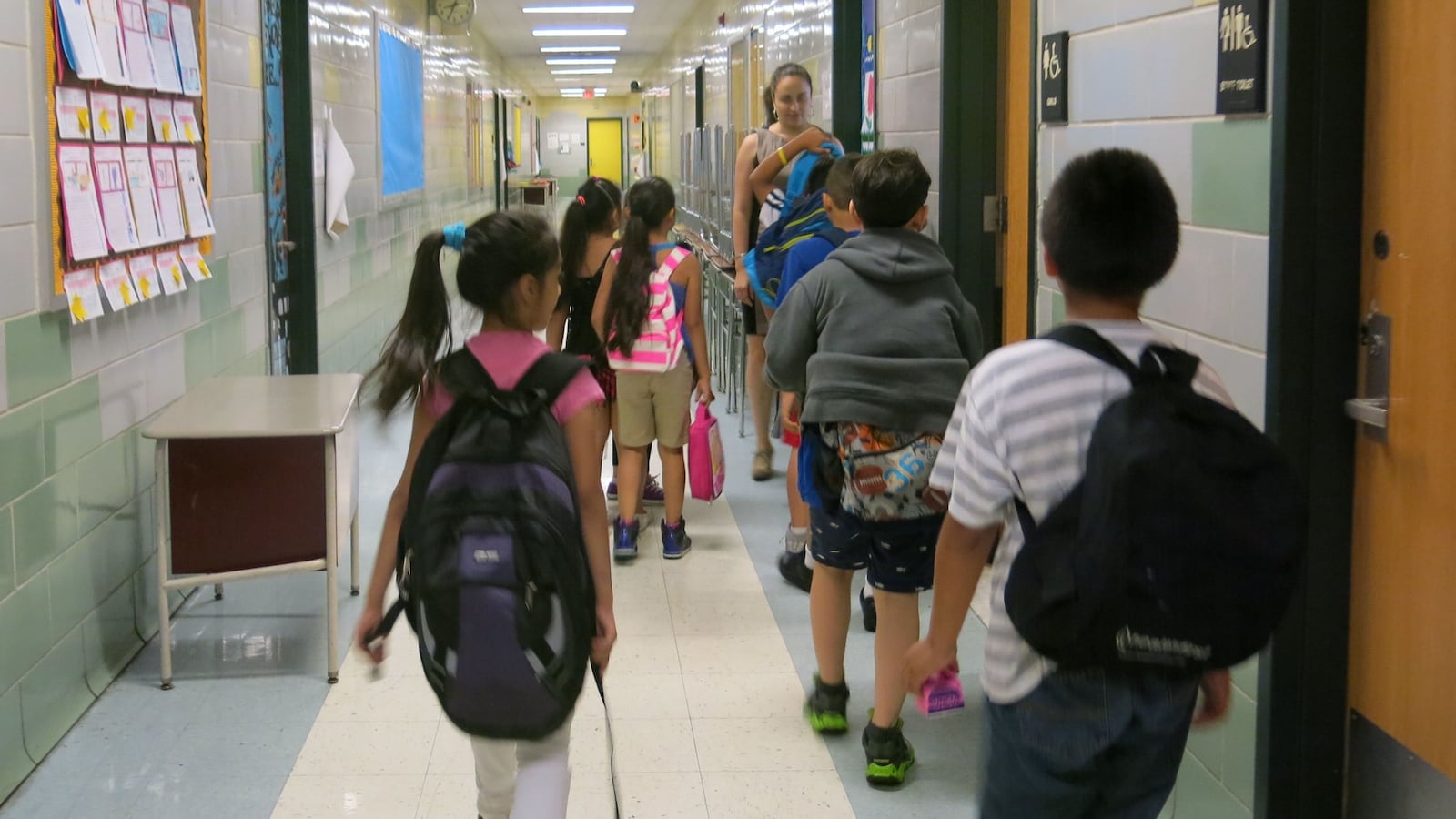Updated, 2:15 p.m. — Far fewer New York City teachers received the highest possible rating on last year’s evaluations than teachers in the rest of the state, according to numbers released Tuesday by state officials.
Of the 62,184 city teachers evaluated in the 2013-14 school year, 9.2 percent earned a “highly effective” rating, though nearly 60 percent of teachers outside the city earned that distinction. Still, 91 percent of city teachers earned one of the top two ratings, with 82 percent of city teachers rated “effective,” 7 percent rated “developing,” and 1.2 percent rated “ineffective,” the lowest possible rating.
Outside of New York City, the numbers skewed toward the higher ratings: Only 2 percent of teachers in the rest of the state were rated developing and less than 1 percent were rated ineffective. Those numbers indicated that the city’s evaluation system was more reliable than the ones negotiated in other districts, state education officials said, not that fewer top teachers were working in New York City schools.
“Our teachers are not getting feedback about their relative strengths and weaknesses,” said Assistant Commissioner Julia Rafal-Baer, referring to the large numbers of teachers in other districts rated highly effective.
The data offers a first glimpse of how the new evaluations — the result of a years-long legislative fight and a contentious dispute between city and union officials — played out in New York City, which debuted the new method in the 2013-14 school year. This is the second year of data for the rest of the state.
The high number of teachers earning the highest ratings sets the stage for another push to change the evaluations, something that Gov. Andrew Cuomo has said he wants to see this year. It’s also likely to be fodder for advocates like Campbell Brown and Mona Davids, who are suing the state over laws they say make it too difficult to remove ineffective teachers.

“The ratings show there’s much more work to do to strengthen the evaluation system,” Regents Chancellor Merryl Tisch said in a statement. “We look forward to working with the Governor, Legislature, NYSUT, and other education stakeholders to strengthen the evaluation law in the coming legislative session to make it a more effective a tool for professional development.”
New York City’s evaluation system is different from those in place in the rest of the state in large part because it was imposed by State Education Commissioner John King after the city and the teachers union were unable to negotiate a plan. Rafal-Baer noted that the plan’s differences from other districts resulted in “significant principal control” and the option to allow teachers and teachers to use video in their observations.
Under the state’s new system, determined by a law passed in 2010, teacher ratings in New York come from three components. Sixty percent of the evaluation comes mostly from classroom observations, 20 percent comes from student learning measures determined by the state, and 20 percent is based on student learning measures determined by the district.
The city’s scoring system set a higher bar for what scores were needed to receive effective and highly effective ratings. For instance, more students needed to hit learning goals for their teachers to be highly rated under the city’s plan.
“A well-developed evaluation system – with four, much more nuanced ratings, instead of only two – helps us identify and provide specific support to struggling teachers, as well as identify those who do not belong in the classroom,” Chancellor Carmen Fariña said in a statement.
The system’s four possible ratings were meant to better distinguish teacher quality, and its supporters said that the evaluations would help resolve the disconnect between teachers’ almost uniformly high ratings and the low number of students who graduate high school prepared for college-level work.
The evaluations’ proponents also said they would also help districts root out the lowest-performing teachers by allowing districts to use ratings to fire or deny job protections. In recent years, supporters have begun to say that the new evaluations are better used to spur teacher improvement.
But as the state simultaneously transitioned to Common Core-aligned tests that factored into some teacher evaluations, lawmakers created a “safety net” to ensure teachers could not lose their jobs or be denied tenure for low student scores. (Gov. Andrew Cuomo still hasn’t signed that legislation.)
Statewide, the distribution of ratings is similar to data from the 2012-13 school year, which the state did not release until this August. In total, 94 percent of teachers and 92 percent of principals earned one of the top two ratings that year.


